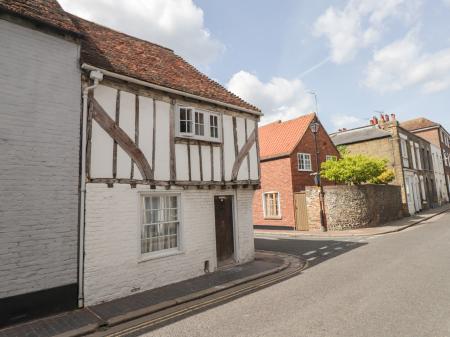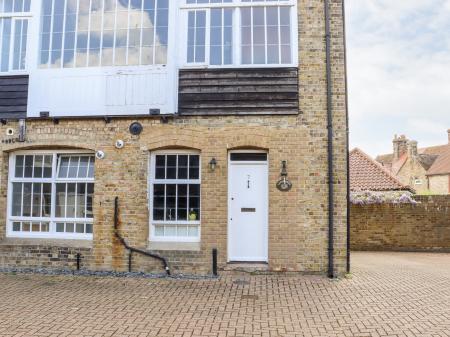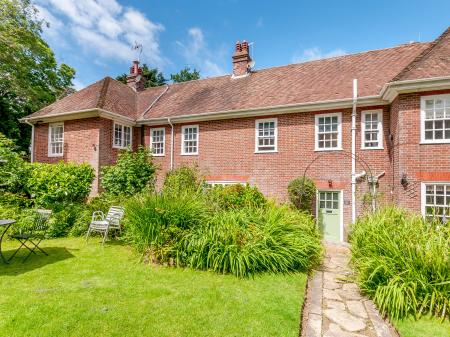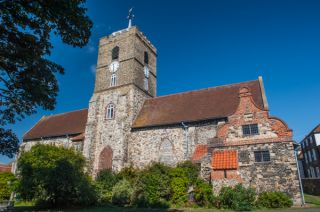
That first church was destroyed by the French in 1216 and was rebuilt by Carmelite monks from Normandy. The present church of St Peter is primarily a late 13th or early 14th-century building.
The interior features a wealth of 14th and 15th-century memorials, a testament to the prosperity of Sandwich in the medieval period as a member of the Cinque Ports. When the tower collapsed in 1661 it destroyed the south aisle completely.
Fragments of rubble from the south aisle were used to fill in the arches of the nave to create the present south wall. The aisle was never rebuilt; the space it used to occupy has been planted as a beautifully secluded 'Secret Garden'. The tower was rebuilt by Flemish refugees and topped by a cupola in Flemish style.
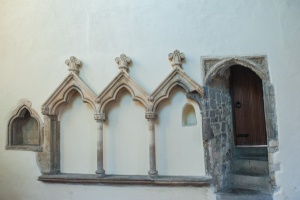
During the 16th and 17th centuries, Sandwich became a popular destination for Huguenot refugees fleeing religious persecution in the Low Countries. The result of this Dutch influence can be seen in the design of the distinctive tower cupola which has made St Peter's such a landmark in Sandwich.
The timber-framed medieval roof is impressive, and the windows feature Decorated Gothic tracery. The interior is sparsely furnished, allowing the bones of this impressive medieval building to show.
Over the south door (the main entrance) is a coat of arms to Charles II, dated to 1660. Immediately beside the door is the 14th century of Sir John Grove of Staple (d. 1350). Grove helped build the south aisle, and his tomb originally stood there, but after the aisle was destroyed by the falling tower in 1661 the effigy was brought inside the church.
On the nave arcade, opposite the entrance, are richly coloured wall paintings dating to about 1330. You can clearly see several crosses of St George and white shields against a red background.
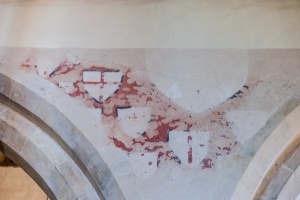
nave arcade
Set into the north wall are 14th-century tomb recesses. One highly decorated niche is thought to be the tomb of Thomas Elys, mayor of Sandwich from 1370-1372 and founder of St Thomas Hospital. In the floor before the north aisle altar is a 16th-century memorial brass to Thomas Gilbert (d. 1597).
The inscription describes him as a 'Searcher of Kent', which, translated into modern terms, means he served as a customs officer. Between the north aisle and the chancel is an arched squint, dating to the 14th century.
On the south side of the chancel is a three-seat sedilia with wonderfully carved capitals atop circular shafts. One unusual feature is a massive sounding board hung on the wall behind the font. This huge wooden construction dates to the 17th century and hung over the pulpit to amplify the preacher's voice during sermons. On the wall above the font is a funeral hatchment, probably made for Francis, wife of poet William Wordsworth, who died in 1813 aged only 29.
Heritage Highlight
Thomas Paine, the author of 'The Rights of Man', whose writings strongly influenced the American Constitution, lived at New Street and was married at St Peter's church. Tragically, his wife lived less than a year after the marriage and died in childbirth. After her death, Paine sailed across the Atlantic to America.
One of the most interesting historic features of St Peter's is not inside the church at all, but outside the west end. There, set upright in the churchyard, is a section of a beautifully carved medieval window. This is all that remains of St Thomas Hospital, 14th-century almshouse, which stood near the church.
The Bell Tolls ...
In the medieval period, it was common practice to ring a curfew bell. This was not simply to let people know they should leave the streets and go indoors, as you might expect. Rather, it let householders know it was time to release geese and pigs into the street to eat all the rubbish that accumulated during the day. And in the Middle Ages that was a lot of rubbish!
A second bell, called the 'goose bell', was rung at 5am to tell householders to take their animals back indoors lest they be impounded. The 8pm curfew is still rung from the tower of St Peters.
St Peter's is in the care of the Churches Conservation Trust and is normally open daylight hours.
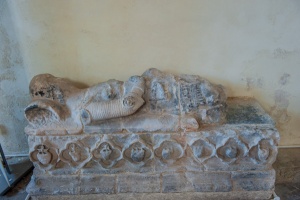
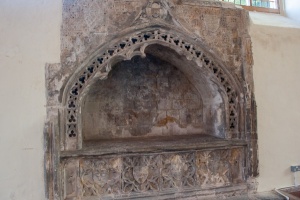
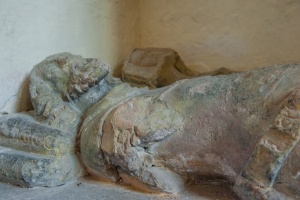
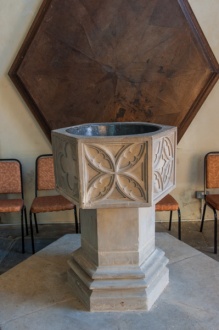
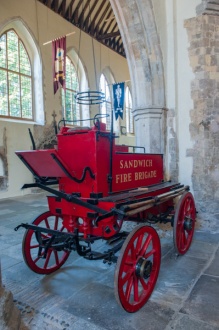
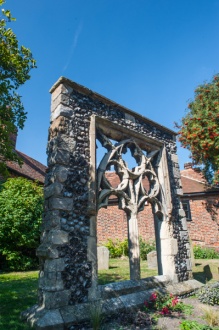
St Thomas Hospital
 We've 'tagged' this attraction information to help you find related historic attractions and learn more about major time periods mentioned.
We've 'tagged' this attraction information to help you find related historic attractions and learn more about major time periods mentioned.